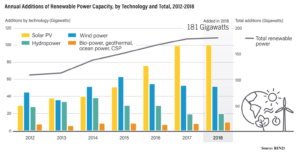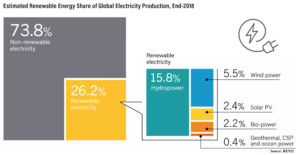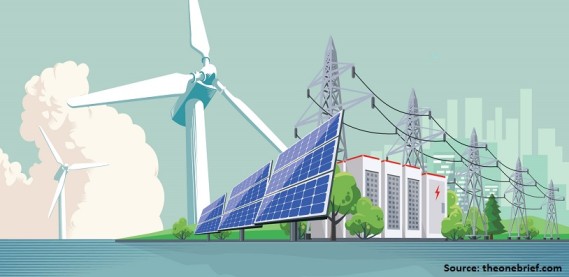No investment is without risk. The holy grail lies in striking a balance between high returns & its associated risks. While there are no set formulas to achieve this, three important steps that will help find the right balance between risk and return are:
1) Diversifying your portfolio – by increasing your exposure to diversified investments, you are essentially spreading your risk.
2) Reviewing your investments – evaluate your risk tolerance periodically so that it is aligned to different life stages.
3) Staying invested for the long-term – this will give your investments enough time to generate returns and ride out the periodic market fluctuations.
Now the question is, why the focus on long term investments in renewable energy?
Climate change has been framed as an ethical issue for years, with a mixed success rate.Let’s take a look at the main drivers for this lag – the fossil fuel industry, which has not only exacerbated the impacts of climate change, but also affected the deployment and investments into renewable energy resources. Coincidentally, oil and gas prices historically have been subject to wild fluctuations (even after fossil fuel subsidies)and represent nothing but massive risk exposure for any investor/portfolio manager. The oil industry is now on the front lines of rising investor fears about the long term returns of fossil fuel energy sources.
Now let’s examine renewable energy sources. Let’s set aside the environmental advantages of avoided carbon and the reputational benefits garnered by reaching inspiring corporate sustainability goals. What you are left with are compelling financial reasons to voluntarily source clean energy in your investment portfolio.
Nearly all the costs of solar and wind energy are in the infrastructure required to capture it. Fortunately, these costs have plummeted at a rate beyond what any expert predicted. The same cannot be said for fossil fuels, and these sectors will eventually or are already recognising that the economics of renewables are becoming irresistible. For example, the cost of fossil fuel-based electricity is expected to increase over time, while the cost of renewables is rapidly decreasing. More importantly, mainstream institutional investors are acknowledging that climate change is not just a threat to the environment, but also a threat to the wealth of their clients.
Renewables have been picking pace over the last decade, and taking the example of solar power, it is fair to say that technology and performance have evolved considerably during this time. This is one of the key drivers for companies, such as us, having entered this field. Our business model is more sustainable, and returns on invested capital in our renewable energy projects have improved to the point where a solar plant producing power with a predictable regularity and predefined Power Purchase Agreement (PPA) rates can now be structured as a reliable, long-term financial investment.
Without a doubt, renewable energy is on its way to becoming the new mainstream energy source (refer to diagram below). This is supported by drivers such as:
• Regulatory frameworks and reduction in CAPEX as a result of technological progress.
• Investors and developers looking to inject capital in dormant sectors, opening up substantial growth, especially in developing countries.
• Renewable energy projects continuing to attract institutional investors such as BlackRock and Goldman Sachs, due to attractive and stable yields.

By the end of 2018, renewables represented more than a third of the world’s installed capacity. This translates to more than 26% of global electricity produced.
Advances in renewable energy technology, coupled with growing cost-competitiveness have strengthened the business and investment case for renewables. This has opened up new investment opportunities that will transform the energy systems for many countries, particularly developing countries that are looking to improve their energy infrastructure and broaden their energy mix. Accelerating the deployment of renewable energy will fuel economic growth, create new employment opportunities and contribute to a climate safe future.

Policy makers will have a key role to play in maximising the benefits of the transition to renewable energy.In a post COVID-19 era (so to speak), where global economies have slowly started opening up, world leaders are faced with a choice to either reopen economies powered by the failing fuel sources of the past, or jump-start their path towards a clean, secure and more energy resilient future.








